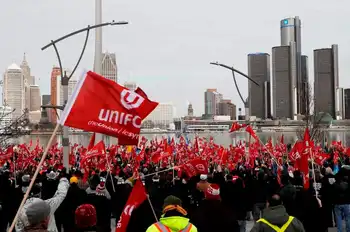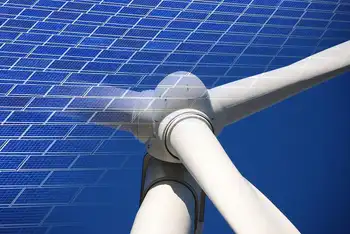Improving green power generation
UNITED KINGDOM - As demand for clean energy rises, so the challenges of increasing output while maintaining stability of power supplies are mounting.
Meanwhile, with the easiest and most suitable sites for green power generation already developed, clean energy producers are turning to less accessible sites — increasing installation and maintenance costs at a time when there is pressure to reduce energy prices. As a result, researchers are investigating new technologies to combat the rise in generation costs.
In the case of wind power, producers are currently investigating building bigger offshore wind farms, both further from the coast and in deeper water. Most UK wind farm foundations are based on monopile construction where a steel tube is driven into the seabed and the wind turbine bolted on. This method becomes more difficult and more expensive as water depths increase and turbine sizes increase.
“To make offshore farms more economical we need to reduce the cost of installation,” said Michael Starling of design, engineering and risk management consultant BMT. “However, the cost is actually getting higher because more activity means the cost of hiring vessels for installations is rising, as is the cost of materials such as steel.”
A team including BMT Nigel Gee, BMT Cordah, Gifford, Hunter Associates, Bierrum International, Nottingham University, E.ON UK and DONG Energy, is therefore designing a method of transporting and installing concrete gravity foundations that can be placed on the sea bed at depths of up to 25m and below, enabling a much larger sea area to be allocated to offshore wind farms.
The method involves creating the concrete gravity foundations onshore, then taking them by barge to the installation location. It is designed to cut the construction and offshore installation cost of deep water wind farms, particularly for larger turbines in deeper water such as those required for the next licensing round of UK offshore wind farms and for more challenging existing sites such as Scarweather Sands and in the German North Sea.
“By using concrete you do not require specialist vessels, and materials are cheaper,” explained Starling. The method may also be less damaging to marine life as it does not require piling. Should the site need to be moved or removed in future, the concrete structure can be lifted off the sea bed. The technology is also transferable to tidal generation projects which often suffer problems with laying cost-effective and functional foundations.
But even when wind turbines have been installed, there are technological hurdles to overcome to ensure continuity of supply. When connecting to the National Grid, large turbines frequently use a doubly fed induction generator (DFIG) system comprising brushes and slip rings. These require regular maintenance, which can be difficult to carry out, particularly offshore in poor weather conditions.
When faced with grid faults such as voltage dips — when overhead transmission line cables clash together during storms and cause short-circuit faults, for example — DFIG systems switch off to protect themselves.
As the country becomes increasingly more dependant on wind power, this will become more problematic, creating power outages. Such faults only last a few hundred milliseconds, meaning the turbine must be re-engineered to be able to ride through them, then restore full power without switching off.
To this end, Newcastle and Northumbria universities, together with Scottish and Southern Energy, are looking at developing brushless doubly-fed reluctance machine (BDFRM) systems for the application in the hope of both making maintenance easier and improving the turbines' fault ride-through (FRT) capabilities.
But because the amount of power generated by the wind turbines is not constant, the technology needs to be adapted to deal with variable loads.
But it is not just wind power that is benefiting from new research. In the case of solar cells, for example, this year has seen a breakthrough in creating more efficient systems that will increase the power available for small solar-powered devices, allowing photovoltaic cells to be used to run an increased range of devices.
In March, Mitsubishi Electric announced it had developed the world's most efficient photovoltaic cells. The company achieved a photoelectric conversion efficiency rate of 18.6 per cent in a 150mm2 practical use multi-crystalline silicon solar cell — an improvement of 0.6 per cent over the company's previous record. The new cells are also more efficient in shade, making them more effective for use on household roofs.
The cell uses a low-reflective honeycomb textured structure which reduces light reflectivity on the surface. However, mass production of such structures has proved problematic, something Mitsubishi claims to have overcome by combining laser patterning and wet etching.
“The design uses nanotechnology to create a cell that is suitably stable,” said Hiroshi Yoshinari, Photovoltaic division manager, Mitsubishi Electric Europe. “It means that cells used in smaller applications will be able to produce more power than ever before. The next step will be to put the prototype into mass production. This is something that we would like to achieve as soon as possible.”
This latest multi-crystal technology is due to be incorporated into Mitsubishi's mass-produced cells by 2010. The company also aims to increase the output of solar power generation systems by combining this technology with its PV inverters, which have the industry's highest energy conversion efficiency rate.
While silicon is an essential component in the wafers used to make solar cells, the supply of silicon has not been able to keep up with demand. So Mitsubishi researchers are looking to develop thinner wafers that not only use less silicon, but also have improved efficiency and increased electrical output.
Improving the pricing of energy from renewable sources is a key factor in ensuring that the percentage of power produced by such means continues to expand without pushing the cost of manufacturing or domestic consumers' bills beyond acceptable levels.
Meanwhile, improving the performance of solar generation will also expand the number of applications possible by using smaller cells. As breakthroughs such as these show, research in this area is producing real results that will have a significant effect on how clean energy is utilized in the future.
Related News

Competition in Electricity Has Been Good for Consumers and Good for the Environment
WASHINGTON - By Bernard L. Weinstein
Electricity used to be boring. Public utilities that provided power to homes and businesses were regulated monopolies and, by law, guaranteed a fixed rate-of-return on their generation, transmission, and distribution assets. Prices per kilowatt-hour were set by utility commissions after lengthy testimony from power companies, wanting higher rates, and consumer groups, wanting lower rates.
About 25 years ago, the electricity landscape started to change as economists and others argued that competition could lead to lower prices and stronger grid reliability. Opponents of competition argued that consumers weren’t knowledgeable enough about power markets to make intelligent choices…




